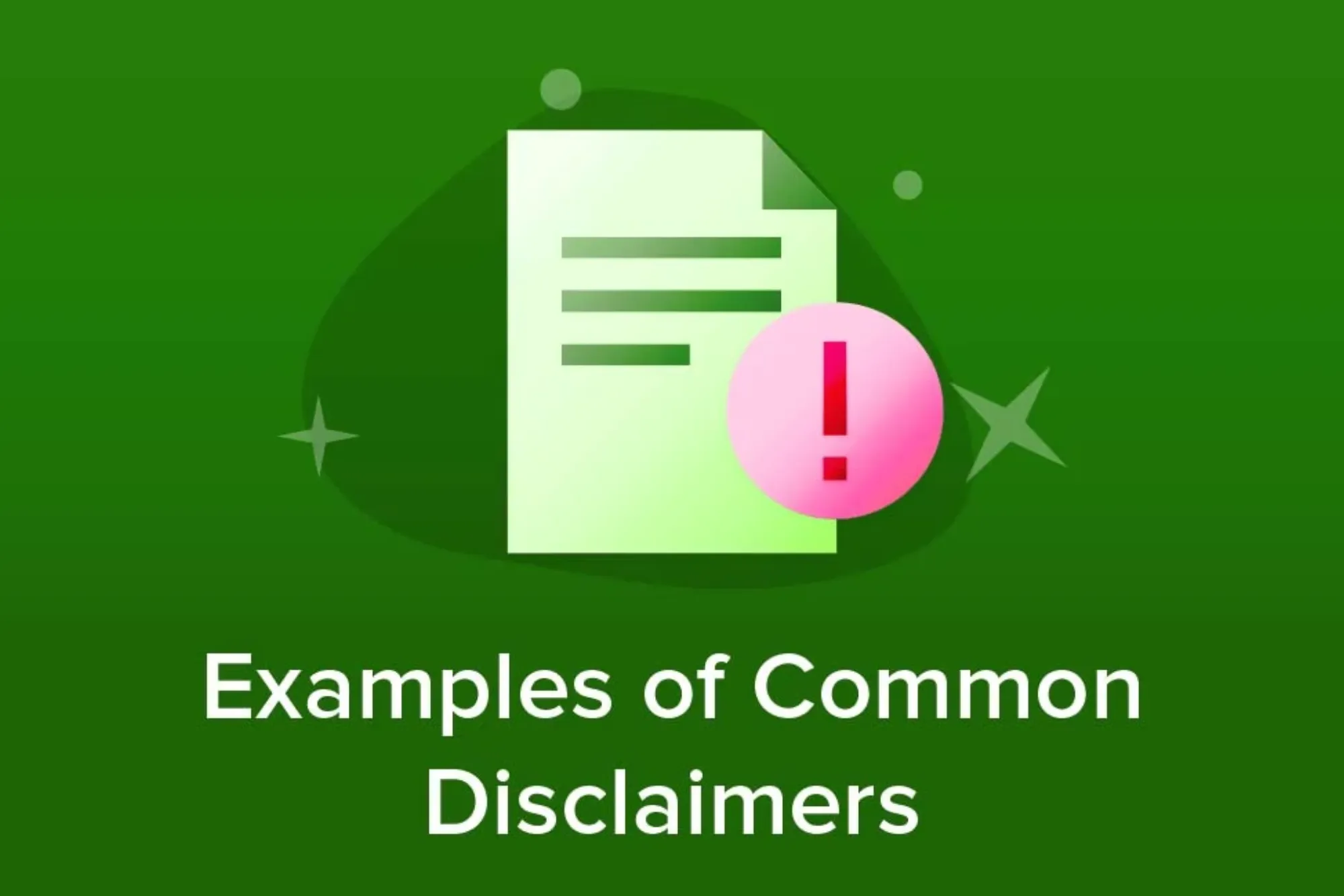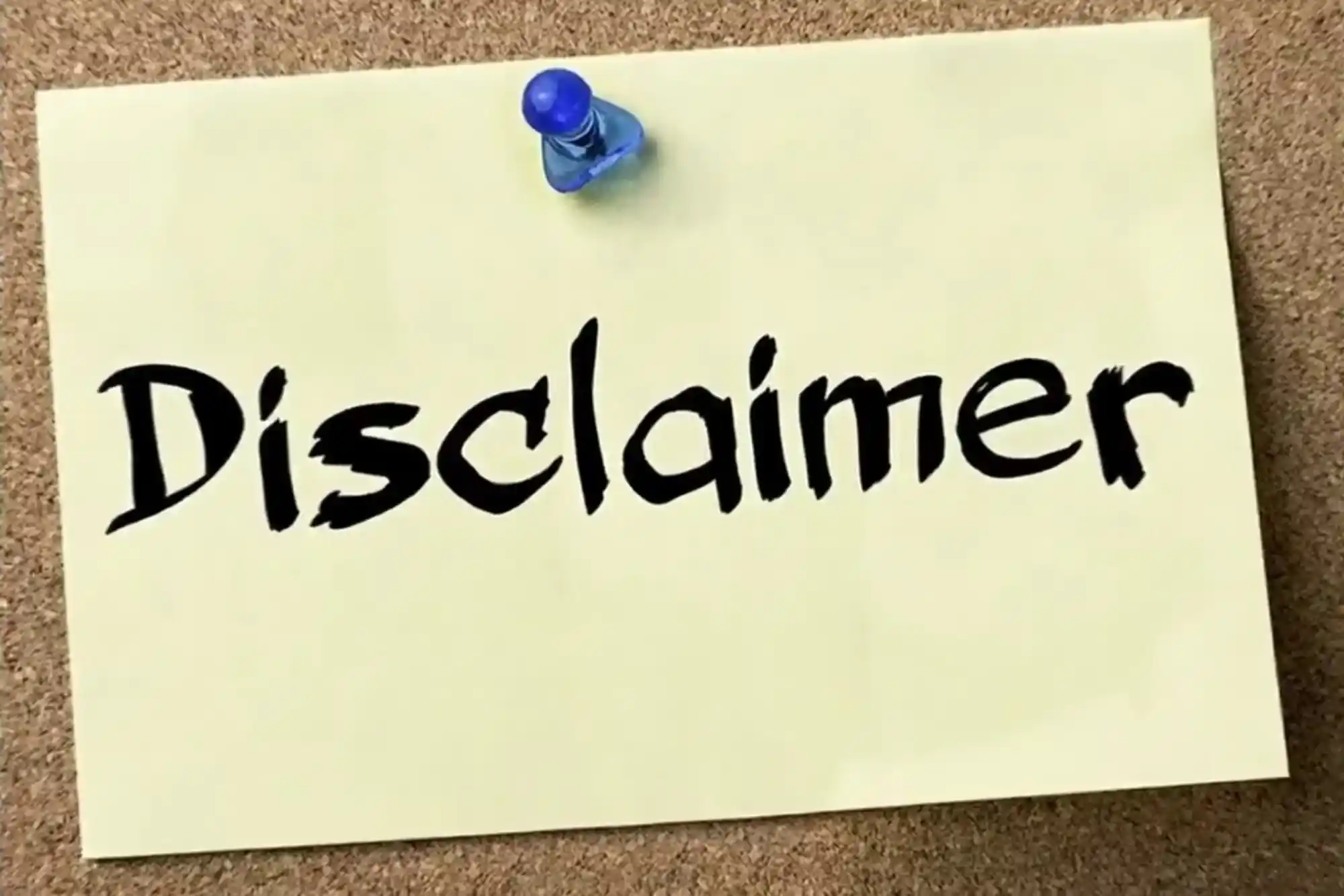A disclaimer is a statement typically used by individuals or organizations to limit their liability for the consequences of certain actions or information. Disclaimers serve as warnings or clarifications, indicating that there may be limits to the accuracy, completeness, or applicability of certain content, products, or services.
Disclaimers appear in various industries and contexts, such as in legal documents, websites, blogs, marketing materials, products, and services. Their main purpose is to protect the entity or person behind the product or service from potential legal action by clarifying the scope of their responsibility.
In the modern world, disclaimers have become essential for businesses, especially in the online space. From website owners to product manufacturers, disclaimers provide critical protection from liability, helping mitigate risks.
Purpose of a Disclaimer
The primary purpose of a disclaimer is to inform users, customers, or readers of the limitations of liability concerning a particular action, service, or piece of content. Disclaimers are meant to reduce confusion and offer transparency about what is covered or warranted by the individual or organization issuing the statement.
For example, on a website, a disclaimer may be used to clarify that the content is intended for informational purposes only and should not be construed as professional advice. Similarly, product manufacturers may include disclaimers to highlight potential risks associated with the use of their product, especially when those risks might not be immediately apparent.
Disclaimers also serve to limit legal responsibility. In the event of an issue arising, disclaimers can be referenced to demonstrate that the company or individual took reasonable steps to inform users of the limitations and risks involved.
Key Elements of a Disclaimer
- Clarity: Disclaimers should be easy to read and understand. Legal jargon or vague language can confuse the intended audience.
- Accuracy: The information provided in a disclaimer must be accurate and truthful. Any misleading or false statements in a disclaimer could invalidate its purpose and expose the issuer to legal risks.
- Visibility: Disclaimers must be displayed in a visible and accessible location, especially on websites or product packaging, to ensure users are aware of their content.
Importance of Disclaimers in Different Fields
Disclaimers are essential across many fields, including law, healthcare, media, and more. Let’s explore their importance in some key areas.
Legal Disclaimers
In legal contexts, disclaimers are used to shield individuals or organizations from liability. For example, a lawyer’s website might feature a disclaimer stating that the information provided on the site does not constitute legal advice. This prevents users from relying on general information in place of seeking personalized legal counsel.
Medical Disclaimers
Medical websites and health blogs often include disclaimers stating that the content provided is not a substitute for professional medical advice, diagnosis, or treatment. This is crucial to avoid liability for health outcomes that might occur if readers follow general advice without consulting a healthcare professional.
Product Disclaimers
Manufacturers often include disclaimers on product packaging or in instruction manuals to warn users of potential risks or side effects. For example, a product that contains allergens might feature a disclaimer to inform consumers of potential health hazards. This helps limit liability in case of adverse reactions, provided the warning is clear and visible.
Online Content Disclaimers
Disclaimers are widely used in the digital space, particularly on websites and blogs. Website owners use disclaimers to clarify the accuracy of their content, warn users about third-party links, or limit liability for errors and omissions in the information they provide. Bloggers might use disclaimers to state that their opinions are their own and not influenced by sponsors or affiliates.
Financial and Investment Disclaimers
Financial advisors, investment firms, and websites that provide financial advice often include disclaimers to protect themselves from liability. They may state that any advice or information provided is for informational purposes only and that users should seek professional financial advice before making investment decisions.
Common Types of Disclaimers

There are many different types of disclaimers, each tailored to specific industries or contexts. Below are some of the most common ones:
General Disclaimer
This is a broad disclaimer that applies to various situations, often used on websites or blogs. It typically clarifies that the content is provided “as is” and that no guarantees are made regarding its accuracy, completeness, or reliability.
No Responsibility Disclaimer
This disclaimer limits the entity’s responsibility for any damages or issues that arise from using the information, product, or service. For instance, a fitness website might use a disclaimer to state that they are not responsible for any injuries that may result from following the exercise advice provided.
Affiliate Disclaimer
Many bloggers and website owners use affiliate marketing to generate income. An affiliate disclaimer informs users that the website may receive a commission if they click on a link and purchase a product. This helps maintain transparency and ensures compliance with legal requirements.
Fair Use Disclaimer
A fair use disclaimer is commonly used in media, such as blogs, YouTube videos, and educational content. It informs users that the content or media being shared is done so under the “fair use” doctrine, meaning it is used for commentary, criticism, or educational purposes without infringing on copyright.
Views Expressed Disclaimer
This type of disclaimer is often used in blog posts or guest articles. It clarifies that the views expressed in the content are those of the author and do not necessarily represent the views of the organization or website.
Errors and Omissions Disclaimer
This disclaimer acknowledges that while every effort is made to ensure the accuracy of the content, there may be errors or omissions, and the organization is not liable for these inaccuracies. It is commonly used in legal and financial contexts.
Third-Party Links Disclaimer
Many websites feature links to third-party websites for additional information or resources. A third-party links disclaimer informs users that the website owner is not responsible for the content, privacy practices, or accuracy of those external websites.
Legal Relevance of Disclaimers
Disclaimers serve as a form of legal protection for businesses and individuals. They provide a safeguard against lawsuits by clearly defining the limits of liability and responsibility. However, for a disclaimer to be legally binding, it must meet certain criteria:
- Proper Drafting: A disclaimer should be written clearly and concisely. Legal jargon or ambiguous language can weaken its effectiveness.
- Reasonable Notice: Users must be given proper notice of the disclaimer. This is why disclaimers are usually placed in visible locations, such as website footers, product packaging, or pop-up alerts.
- Compliance with Local Laws: Different countries and regions have varying legal requirements regarding disclaimers. It’s important to ensure that the disclaimer complies with local laws and regulations.
While disclaimers can provide significant legal protection, they are not foolproof. Courts will evaluate whether the disclaimer was reasonable and whether the issuer took adequate steps to warn users of potential risks.
How to Write an Effective Disclaimer
Creating an effective disclaimer involves more than just copying and pasting standard text. The disclaimer should be customized to reflect the specific risks and issues associated with the product, service, or content in question. Here are some steps to follow when writing a disclaimer:
- Identify Your Risks: Consider the potential risks that users might face when using your product or service. Tailor the disclaimer to address these specific risks.
- Be Clear and Concise: Avoid legal jargon or complex language. Your disclaimer should be easy for your audience to understand.
- Ensure Visibility: Place the disclaimer in a prominent location. For websites, this could be in the footer, on the terms and conditions page, or as a pop-up notification.
- Consult Legal Professionals: It’s always a good idea to consult with a lawyer to ensure your disclaimer is comprehensive and legally compliant.
Final Thoughts
Disclaimers play an important role in mitigating legal risks and maintaining transparency with users. Whether you operate a website, sell products, or offer services, a well-crafted disclaimer can protect your interests while informing your audience of their responsibilities and risks. By understanding the disclaimer and using it appropriately, you can safeguard your business and build trust with your customers.




